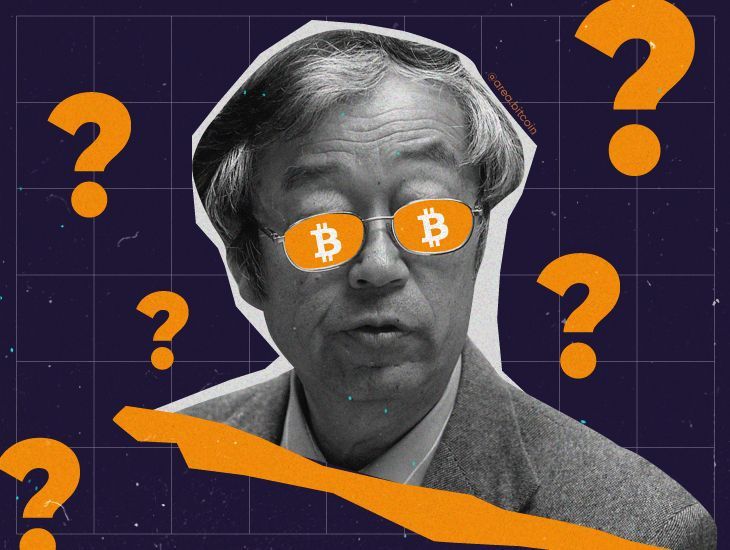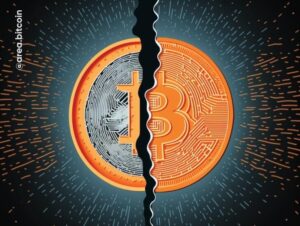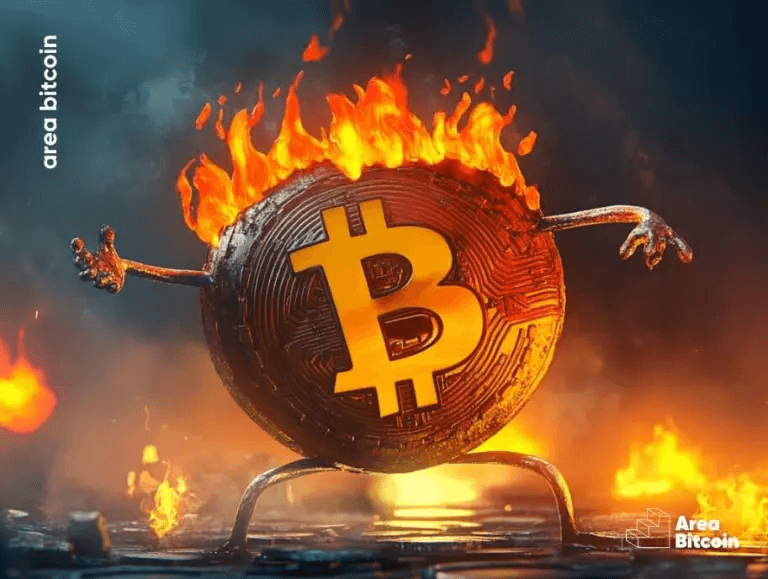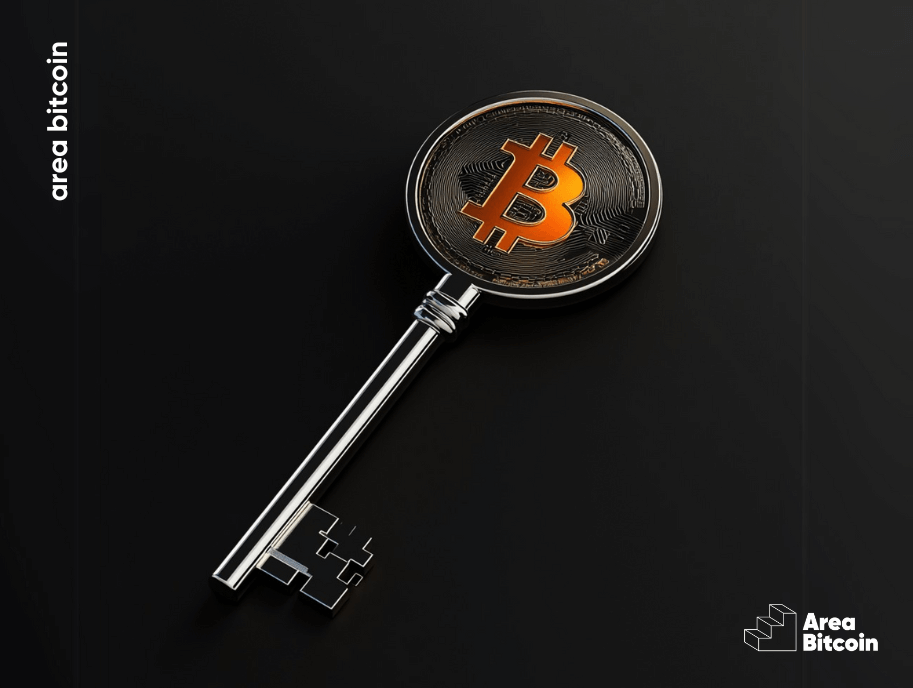Satoshi Nakamoto is the pseudonym of the creator of Bitcoin, the first usefull digital money invented and also the most famous and valuable. But who is this person?
Nobody knows.
But one thing is certain: Satoshi Nakamoto is changing the history of the global economy, and his identity is one of the greatest mysteries of our times.
Nobody knows if Satoshi was a man or a woman, if was just one person or a group of people, or even if Satoshi is still alive now somewhere on Planet Earth, just watching Bitcoin increase in adoption. There are many theories around this.
In this article, you will understand who the contenders are to be Satoshi Nakamoto.
What we know so far about Satoshi Nakamoto
Satoshi Nakamoto started coding the first Bitcoin implementation in C++ in May 2007.
In August 2008, he sent emails to two respected cypherpunks, Hal Finney and Wei Dai, asking for feedback on the first versions of the Bitcoin white paper. Both gave positive feedback to Satoshi, saying they thought the project was very promising.
A few months later, in October 2008, Satoshi Nakamoto published the Bitcoin white paper in a cryptography group. This aroused some curiosity at the time, but it wasn’t exactly a hit! At the time, Bitcoin itself wasn’t ready yet. Satoshi Nakamoto was still working on finalizing the code.
On January 3, 2009, Satoshi officially opened the source code and set the Bitcoin blockchain running. Some programmers like Hal Finney became curious and also put their computers to work on the Bitcoin network and contributed by sending bug reports to Satoshi. But, basically, in the beginning, Satoshi Nakamoto was the only person running the software and mining coins.
The Bitcoin network gradually gained attention. The first tech communities, like Slashdot, noticed this curious experiment, and news began to spread. It became increasingly evident that there was a new form of money on the Internet called Bitcoin.
At the end of the network’s first year, although Bitcoin already had some users running the software, it still had no price. It was worth ZERO, nothing, not even a penny.
Satoshi Nakamoto stayed for a few more years working on the code and exchanging ideas with other cryptographers around Bitcoin. Then, in April 2011, he handed over control of the bitcoin.org website and Bitcoin repository to developer Gavin Andresen.
As far as we know, nobody has heard from Satoshi since then. There has never been any proof of who Satoshi Nakamoto is.
Currently, Satoshi’s addresses hold about 700,000 bitcoins. Satoshi can be considered a multi-billionaire.
Who is Satoshi Nakamoto?
Even though it is highly unlikely that Satoshi will reveal his identity, speculation about who is the name behind this pseudonym is rampant.
Who could Satoshi Nakamoto be?
Here are some people who might be Satoshi Nakamoto:
Hal Finney
Harold Thomas Finney, better known as Hal Finney, was one of the first Bitcoin enthusiasts.
He was a software engineer advocating for cryptography and digital privacy.
Finney was one of the first guys to run the Bitcoin network, including a famous tweet in which he wrote, “Running Bitcoin,” on January 11, 2009.
This means that from that moment, he was running the Bitcoin blockchain alongside Satoshi. Finney mined block 70 and received the first recorded Bitcoin transaction in history: 10 bitcoins that Satoshi sent to him as a test.
In a 2013 blog post, Finney says he was fascinated by the idea of a decentralized online currency, and about the interactions he had with Satoshi over the internet, he said:
“I thought I was dealing with a young man of Japanese descent who was very intelligent and sincere. I’ve been fortunate enough to meet many brilliant people throughout my life, so I know how to recognize the signs.”
Finney denied claims that he was the creator of Bitcoin and always said his involvement with the currency was to assist Satoshi Nakamoto and the network.
Unfortunately, Finney is no longer with us; he died in 2014 from a neurodegenerative disease. Hal Finney’s body is frozen, awaiting a solution from science.
Dorian Nakamoto
If no one knows who Satoshi is, then who is this Japanese-American guy popping up on Google? Google “Satoshi Nakamoto” and see what comes up.
So, did you find this Asian man?
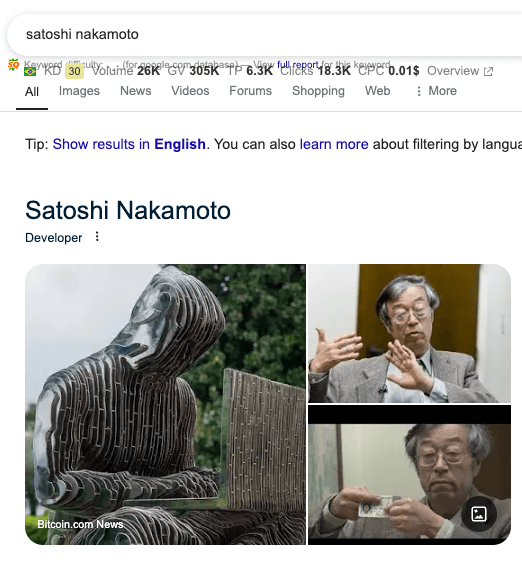
That’s Dorian Nakamoto. He’s nearly 70, lives in Los Angeles, and according to him, he’s not the creator of Bitcoin.
Dorian gained fame in 2014 when an article in Newsweek claimed he was Satoshi Nakamoto.
At that time, Dorian was hounded by journalists and even the police, but he insists he neither invented nor worked with Bitcoin.
Since then, Dorian has become an icon in the Bitcoin world, and his face is often used to represent Satoshi Nakamoto.
Read here: Will Bitcoin Rise?
Nick Szabo
If there’s one person who’s been turned inside out in an attempt to find some indication of Satoshi’s identity, it’s Nick Szabo. It’s no wonder that Szabo is one of the suspects. In the late 90s, Szabo created his own cryptocurrency, Bit Gold, a project pivotal to Bitcoin’s development.
In 2014, a team of linguistic researchers studied Satoshi Nakamoto’s writings and compared them with thirteen potential creators of Bitcoin.
According to them, there are many similarities pointing to Szabo as Satoshi Nakamoto.
In addition to writing style, the researchers found that the Bitcoin white paper was drafted using Latex, an open-source document preparation system. This same system was also used by Szabo in all his publications.
The researchers also said that the white paper’s author was highly familiar with concepts similar to Bitcoin and that Satoshi references b-money, hashcash, and other concepts by Wei Dai.
Interestingly, Szabo’s Bit Gold was not mentioned, even though Bitcoin was clearly influenced by Bit Gold.
To top it off, Szabo changed the dates of his Bit Gold articles on his blog to make it seem they were posted after Bitcoin’s launch. But he adamantly denies being Satoshi.
This list of potential Satoshi Nakamotos also includes Adam Back, Andreas Antonopoulos, Steve Jobs, Elon Musk, and even… ETs (who knows?).
It’s been almost 10 years since the inception of Bitcoin, and we’re still nowhere near confirming who invented this revolutionary technology.
Want to know more about what is Bitcoin? Watch the video below
How could Satoshi appear and prove his existence?
One way someone could prove they’re Satoshi is by moving his bitcoins and making some transactions to another Bitcoin address.
But what’s intriguing is that Satoshi’s bitcoins are still untouched in their addresses to this day.
And if you think about it, it makes total sense that the creator of Bitcoin would want to remain anonymous.
Otherwise, he’d probably already be imprisoned or dead for creating a decentralized currency, one that doesn’t depend on a central bank or governments to run and is global.
Bitcoin touches the heart of the world’s political and economic issue, centralization. Of power, decision-making, and income. It destroys costly transfer services and eliminates the need for intermediaries like Visa, Mastercard, and PayPal.
In 1998 a Hawaiian named Bernard von NotHaus tried to implement a new form of currency called “Liberty Dollars.”
Do you know what came of that?
He was accused of violating federal law in the United States and sentenced to six months of house arrest, coupled with three years of probation.
And that wasn’t the only story.
In 2007, one of the first digital currencies, E-Gold, was banned after a major dispute with the American government. They claimed that E-Gold was a money laundering scheme.
Satoshi Nakamoto has good reasons to want to remain anonymous, and it’s better that he continues to do so because part of Bitcoin’s success comes from it being truly decentralized, not having an owner.
Also read: What is Fedimint?
But why would anyone go through the trouble of creating something so incredible without wanting to take credit for it?
Much of the mystery around Satoshi Nakamoto involves his motivations.
Why would anyone go through the trouble of creating a decentralized currency only to completely disappear afterward and not take credit for it?
Perhaps one of Nakamoto’s original posts about the Bitcoin proposal can give us some clues.
In February 2009, Nakamoto wrote:
“The root problem with conventional currency is all the trust that’s required to make it work. The central bank must be trusted not to debase the currency, but the history of fiat currencies is full of breaches of that trust. Banks must be trusted to hold our money and transfer it electronically, but they lend it out in waves of credit bubbles with barely a fraction in reserve. We have to trust them with our privacy, trust them not to let identity thieves drain our accounts.”
Many Bitcoiners believe that Satoshi might be a libertarian who despises the rich and corrupt politicians.
Others suggest that the timing of Bitcoin’s emergence, in the years following the burst of the real estate bubble in 2007, is a clear indication that the currency was created as a means to end the corrupt banking system.
The message that Satoshi left in the first block of Bitcoin leads us to believe that this was indeed the motive.
Satoshi left a message in the code of the first Bitcoin block, called the Genesis block.
He inserted the title of The Times newspaper’s cover story of that day, and this article stated that the European Central Bank, for the second time, was going to bail out the country’s banks that were broke at the time.
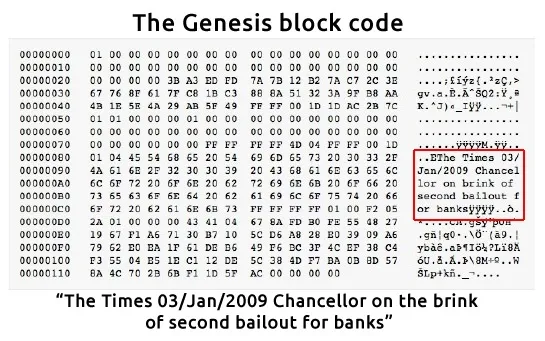

The cherry on top came in 2016 when Satoshi Nakamoto was nominated for the Nobel Prize in Economics. Obviously, he didn’t show up to receive the award.
We always wonder where Satoshi is and if he is indeed a real person.
Is he watching all this Bitcoin appreciation? Is he keeping up with the Twitter fights? And will he ever give a sign of life or even reveal his identity?
Honestly, we hope not.
Thanks Satoshi, wherever you are!
Share on your social networks:

Founder of Area Bitcoin, one of the largest Bitcoin education projects in the world, she is a marketer, passionate about technology, and a full-time hands-on professional. She has participated in major Bitcoin conferences such as Adopting Bitcoin, Satsconf, Surfin Bitcoin, and Bitcoin Conference.
Did you like this article? Consider buying us a cup of coffee so that we can keep writing new content! ☕

